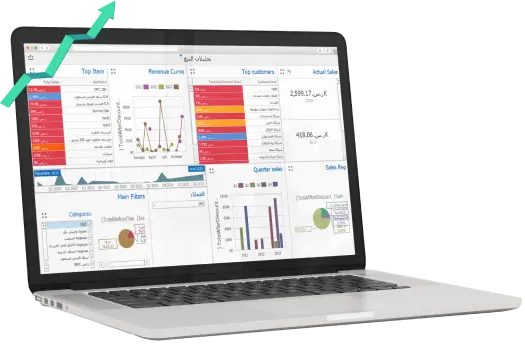Factoring companies are companies that buy debts from their owners and collect them in exchange for a percentage. In other words, companies need cash flow to meet their operational needs, so they sell customer invoices to the factoring companies, and the factoring companies financing advance payments of the amount of the invoice according to the factoring agreement
It receives the factoring fee in addition to the factoring commission, and the collection companies operate more efficiently because they have considerable experience in this field for selling accounts receivable (e.g. invoices and notes receivable)
In recent years, factoring is becoming more widespread in the companies as a source of finance.
Journal Entries for Factoring Receivables
1- Transfer without Recourse
This assumes that the financing or factoring company believes that there is no risk of not collecting the debts of the clients and in this case the purchaser (the factoring company) who bears the risks in the case of no debts collection and the seller does not bear any responsibility and these debts didn’t included on his financial statements and has no liability to collect them or not, in a sense the purchaser bears the risk of collection, and the transfer an invoice is a direct selling and true sale of accounts receivable, and the seller records a loss from the sale because of course it needs cash quickly, so it sells its debts to customers and this makes the transfer made without recourse
Of course, when the risks increase, the return increases, and therefore in transfer without recourse the finance company gets a higher interest rate compared to transfer with recourse
The finance company does not give the seller the full amount nominal value of the accounts receivable in the finance company, and the financing expenses are deducted and it is a percentage to cover the possibility of having invoices returns, and the finance companies get financing expenses ranging from 1% to 3% of the customers' debts
Example: Factoring without Recourse
Al-Salam Company purchased 100 tons of steel from Al-Etihad Trading Company the value of one million pounds, and El Mahrousa Company needed cash flow to manage the payment of one of the purchase credits, so it sold the value of the invoice to a factor (National Bank), National Bank Company purchased the invoice at a value of 93% of the invoice value and, in the factoring agreement with Al-Etihad Trading Company the factoring commission 2% and the retained amount 5% of the value of the invoice until the collection
Cash Advance = 1,000,000 * 93% = 930,000
Factoring Commission = 1,000,000 * 2% = 20,000
Retained Amount = 1,000,000 * 5% = 50,000
Journal entries in the case of transfer with recourse in the books of Al-Etihad Trading Company
The sales journal entry is:
| Account | Debit | Credit |
| Accounts Receivable (Al-Salam Company) | 1,000,000 | |
| Sales | 100,000 |
Second, Journal Entries for Invoice Factoring Transactions
| Account | Debit | Credit |
| Bank | 930,000 | |
| Factoring Commission Account | 20,000 | |
| Reserve Account - Due from Factor (National Bank) | 50,000 | |
| Accounts Receivable (Al-Salam Company) | 1,000,000 |
In the case that the factoring company received the money from the customer, the journal entry is as follows
| Account | Debit | Credit |
| Cash | 50,000 | |
| Reserve Account - Due from Factor (National Bank) | 50,000 |
Journal entries in the books of National Bank
| Account | Debit | Credit |
| Accounts Receivable (Al-Salam Company) | 1,000,000 | |
| Financing Revenue | 20,000 | |
| Due to Seller (Al-Etihad Trading Company) | 50,000 | |
| Cash | 930,000 |
And the purchaser when he receives his money from this customer, the journal entry is as follows
| Account | Debit | Credit |
| Bank | 100,000 | |
| Accounts Receivable (Al-Salam Company) | 100,000 |
2- Transfer with Recourse
When sold with recourse, the seller promises to buy back any receivables that are not collected by the purchaser, and the seller who bears the liability on his financial statements.
Example: Factoring With Recourse
Al-Salam Company purchased 100 tons of steel from Al-Etihad Trading Company the value of one million pounds, and El Mahrousa Company needed cash flow to manage the payment of one of the purchase credits, so it sold the value of the invoice to a factor (National Bank), National Bank Company purchased the invoice at a value of 93% of the invoice value and, in the factoring agreement with Al-Etihad Trading Company the factoring commission 2% and the retained amount 5% of the value of the invoice until the collection
Cash Advance = 1,000,000 * 93% = 930,000
Factoring Commission = 1,000,000 * 2% = 20,000
Retained Amount = 1,000,000 * 5% = 50,000
Accounting treatment in case of sale while preserving the right of recourse
Journal entries in the case of transfer with recourse in the books of Al-Etihad Trading Company
The sales journal entry is:
| Account | Debit | Credit |
| Accounts Receivable (Al-Salam Company) | 1,000,000 | |
| Sales | 100,000 |
Second, Journal Entries for Invoice Factoring Transactions
| Account | Debit | Credit |
| Bank | 930,000 | |
| Factoring Commission Account | 20,000 | |
| Reserve Account - Due from Factor (National Bank) | 50,000 | |
| Factoring Company (National Bank) | 1,000,000 |
If the factoring company can collect the debt from the customer, it will be the same journal entry in the example
In the case that the factoring company collected the money from the customer, the journal entry is as follows
| Account | Debit | Credit |
| Cash | 50,000 | |
| Factoring Company (National Bank) | 1,000,000 | |
| Reserve Account - Due from Factor (National Bank) | 50,000 | |
| Accounts Receivable (Al-Salam Company) | 100,000 |
Second Case: Spot Accounts Receivable Financing (Spot Factoring)
That’s is not a true sale but considered borrowing against accounts receivables
- The seller guarantees payment to the purchaser
- Transferring the invoices is considered as borrowing against invoices
The same example above and assuming the sale failed
Journal Entries for Invoice Factoring Transactions
| Account | Debit | Credit |
| Bank | 930,000 | |
| Factoring Commission Account | 20,000 | |
| Reserve Account - Due from Factor (National Bank) | 50,000 | |
| Factoring Company (National Bank) | 1,000,000 |
The sale has been backed out of
| Account | Debit | Credit |
| Factoring Company | 1,000,000 | |
| Reserve Account - Due from Factor (National Bank) | 50,000 | |
| Bank | 950,000 |










